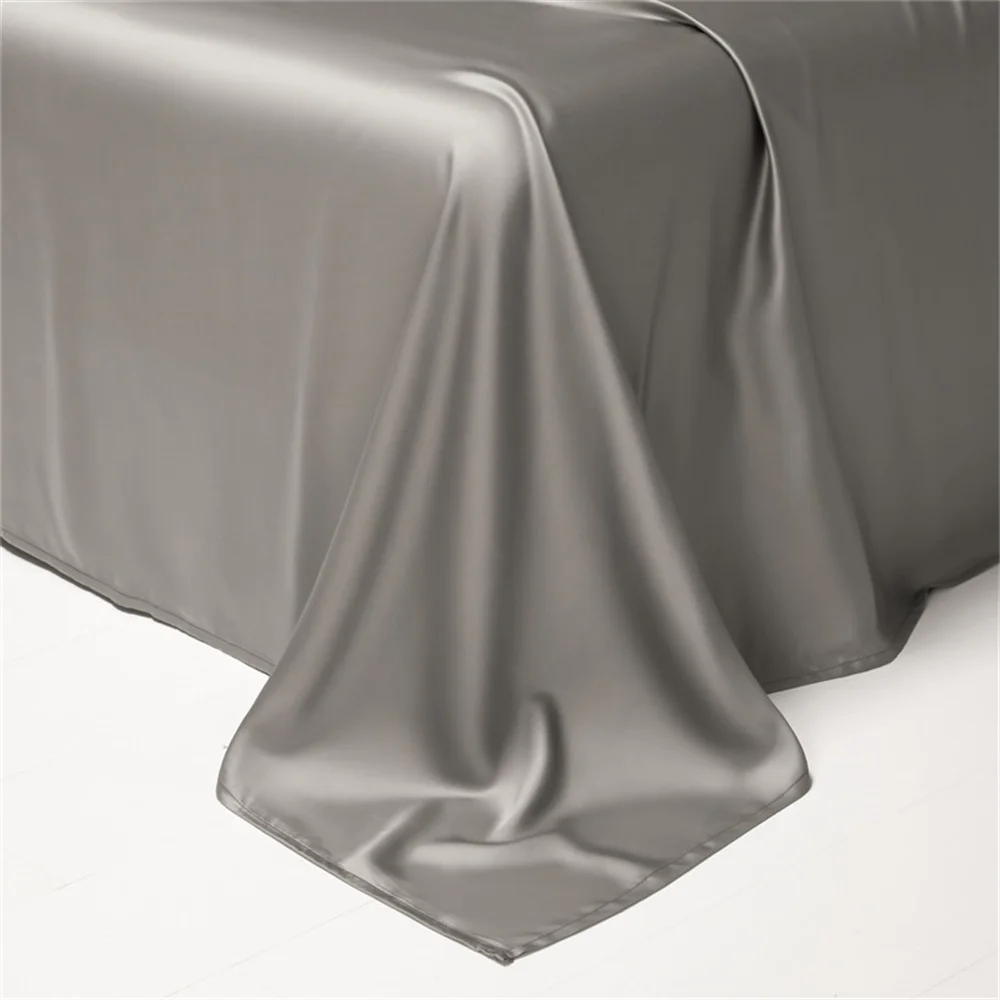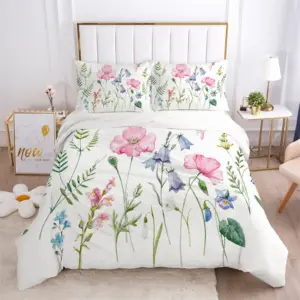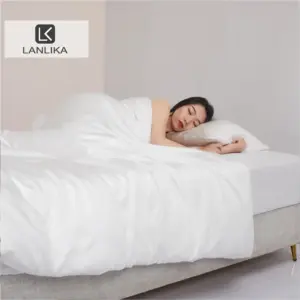Introduction: The Transformative Power of Silk Bedding
Transforming your bedroom into a luxurious sanctuary starts with the right bedding choices. Silk bedding stands apart with its unmistakable smoothness, natural temperature regulation properties, and hypoallergenic qualities that benefit both your skin and sleep quality. Unlike ordinary bedding materials, silk contains 18 amino acids that work in harmony with your body’s natural chemistry, creating an environment that pampers your skin while you rest.
The concept of “bedding combinations” goes far beyond simple sheet selection. It’s about thoughtfully curating components that work together to create both aesthetic harmony and functional comfort. When properly combined, silk bedding elements can:
- Enhance sleep quality through temperature regulation
- Create a visually stunning focal point in your bedroom
- Provide year-round comfort with proper seasonal adaptation
- Elevate your everyday sleep experience to resort-level luxury
The amazing benefits of Mulberry silk sheets extend beyond basic comfort, affecting everything from your skin’s appearance to your overall sleep quality. This guide will walk you through selecting the perfect components, mastering styling techniques, and adapting your silk bedding for every season to maximize these benefits. Understanding the complete guide to Mulberry silk bed sheets provides the foundation for creating bedding combinations that are both beautiful and beneficial.
Essential Components of Silk Bedding: Building Your Collection
Creating the perfect silk bedding combination starts with understanding the essential building blocks. Each component serves both a practical function and contributes to the overall aesthetic. When properly selected and arranged, these elements transform an ordinary bed into an extraordinary sleep experience.
Fitted Sheets: The Foundation
– Forms the base layer that touches your skin throughout the night
– Look for deep pocket options (10-18 inches) for thicker mattresses
– Should fit snugly without wrinkling for optimal comfort
– Typically available in 19-22 momme weight for durability with softness
Flat Sheets: The Versatile Middle Layer
– Can be used between you and your duvet or folded at the top for decorative effect
– Offers additional temperature regulation during seasonal transitions
– Provides protection for more expensive duvet covers
– Typically measures 96” x 106” for a queen size, allowing for proper tucking or draping
Duvet Covers: The Statement Piece
– Serves as the visual centerpiece of your bedding arrangement
– Available with button, zipper, or tie closures (each affecting the overall look)
– Should accommodate your preferred duvet insert weight and material
– Creates the most immediate visual impact in your bedding ensemble
Pillowcases vs. Pillow Shams
– Pillowcases: Primarily functional for sleeping, with envelope or zipper closures to protect pillows
– Pillow shams: Decorative coverings with flanged edges, typically removed before sleeping
– Standard silk pillowcases measure approximately 20” x 26”, while shams may be larger or have additional decorative elements
Throw Blankets and Decorative Elements
– Add textural interest and seasonal adaptability
– Can introduce complementary colors or patterns to a solid bedding base
– Provide additional warmth options without changing the entire bedding setup
– Create visual dimension through strategic layering
Understanding what’s included in silk bedding sets helps you identify which components you may already have and what you might need to add for a complete collection. The versatility of these components allows for countless combinations to suit your personal style.
For those seeking ready-made harmony, exploring curated silk bedding sets can provide inspiration for creating your own combinations or offer a complete solution with perfectly matched components.
Understanding Silk Quality: Making Informed Choices
Before creating your perfect bedding combination, understanding silk quality is essential for making choices that will deliver both beauty and durability. Not all silk is created equal, and knowing the differences will help you invest wisely in pieces that will enhance your sleep sanctuary.
Mulberry silk stands as the premier choice for luxury bedding. Derived from silkworms fed exclusively on mulberry leaves, it produces longer, stronger, and more uniform fibers than other varieties. What makes Mulberry silk special includes its exceptional smoothness, natural hypoallergenic properties, and superior temperature regulation capabilities that remain unmatched by other silk types.
Momme weight serves as the key indicator of silk quality and durability. Think of it as similar to thread count in cotton, but specifically designed to measure silk’s density. The optimal range for bedding falls between 19-25 momme, with silk bedding quality and momme weight having a direct relationship:
– 19-21 momme: Lightweight yet durable, excellent for warm sleepers
– 22-25 momme: Luxurious weight with maximum durability, ideal for year-round use
– Above 25 momme: Ultra-premium weight with exceptional drape and longevity
Silk Varieties Comparison
| Silk Type | Best Applications | Characteristics | Care Difficulty |
|---|---|---|---|
| Mulberry | Sheets, Pillowcases, Duvet Covers | Smooth, Strong, Hypoallergenic | Moderate |
| Charmeuse | Decorative Shams, Throw Pillows | High Sheen, Lustrous Appearance | High |
| Habotai | Lightweight Summer Layers | Lightweight, Breathable, Less Durable | Low |
| Tussah | Decorative Accents, Throws | Textured, Natural Variations, Rustic Feel | Moderate |
Beyond momme weight, look for these additional quality indicators:
– OEKO-TEX certification ensuring the silk is free from harmful substances
– Color consistency throughout the fabric, indicating quality dyeing processes
– Tight, even weaving with minimal slub marks or inconsistencies
– Proper finishing that provides the characteristic silk luster without excessive chemical treatments
Quality silk bedding represents an investment in your sleep environment. Understanding these distinctions helps you select pieces that will maintain their beauty and performance for years to come, making them the perfect foundation for your bedding combinations.
Color Theory for Silk Bedding: Creating Visual Harmony
The unique luster of silk interacts with color in ways that other fabrics cannot match. This special relationship between silk and color means your bedding choices can dramatically transform the visual atmosphere of your bedroom. Understanding a few color principles helps create combinations that please the eye and enhance your space.
Monochromatic Magic
Creating depth through varying shades of a single color works exceptionally well with silk’s natural sheen. A monochromatic approach might include:
– Ivory fitted sheets as the base layer
– Cream flat sheets for subtle contrast
– Champagne duvet cover as the focal point
– Pearl-white decorative pillows for dimensional interest
This approach creates sophisticated depth while maintaining a cohesive, calming aesthetic. The subtle variations catch light differently, showcasing silk’s natural luminosity.
Complementary Color Pairings
Complementary colors (those opposite each other on the color wheel) create vibrant energy when used together. With silk’s reflective properties, consider these successful combinations:
– Soft blue sheets with amber accents
– Sage green foundations with rose-colored throws
– Lavender bases with subtle yellow decorative elements
For bedrooms, using the muted version of one complementary color often creates the most restful environment.
The 60-30-10 Rule
This designer principle works beautifully with silk bedding:
– 60% dominant color (typically the duvet cover and fitted sheet)
– 30% secondary color (flat sheet and standard pillowcases)
– 10% accent color (decorative pillows, throws, or bed runners)
Neutral grey silk sheets make an excellent foundation color, allowing for seasonal accent changes without replacing your entire bedding collection.
Color Psychology Considerations
Different colors evoke different emotional responses, particularly important in a sleep environment:
– Blues and greens promote tranquility and restfulness
– Warm golds and soft yellows create a sense of comfort
– Gentle pinks encourage relaxation and romance
– Silver tones evoke sophistication and modern elegance
Seasonal adjustments can be easily made through accent pieces, transitioning from lighter, cooler tones in summer to richer, warmer hues in winter—all while maintaining your core silk bedding investment pieces.
Mastering Pattern Play in Silk Bedding
While solid colors showcase silk’s natural luster beautifully, thoughtful pattern integration can elevate your bedding combination from elegant to extraordinary. The key lies in strategic pattern placement and maintaining harmony across all elements.
When mixing patterns in silk bedding, follow these guiding principles:
Scale Variation
Combine patterns of different sizes to create visual interest without competition:
– Large-scale patterns work best on dominant pieces like duvet covers
– Medium-scale patterns suit flat sheets and standard pillowcases
– Small-scale or subtle patterns complement decorative elements
This variation creates a sophisticated layered look while preventing visual overwhelm.
Textural Patterns for Understated Elegance
Silk excels at showcasing subtle textural patterns that add dimension without boldness:
– Jacquard weaves that create tone-on-tone effects
– Subtle geometric patterns that catch light differently as you move
– Delicate quilting that adds dimensional interest
These understated options are particularly effective for those who prefer a more minimalist aesthetic while still incorporating pattern elements.
Strategic Bold Pattern Placement
When incorporating more prominent patterns:
– Use bold patterns sparingly as focal points
– Balance with solid pieces in complementary colors
– Ensure the bold pattern contains colors that tie into other bedding elements
A boldly patterned decorative pillow or throw can anchor an otherwise subtle combination, creating a designer-worthy focal point.
Finding inspiration for your own combinations can come from exploring silk bedding bedroom décor ideas that showcase successful pattern integrations. Remember that silk’s natural sheen will enhance any pattern, making even subtle designs more visible than they might be in other fabrics.
The most successful pattern combinations maintain a cohesive color story throughout all elements, ensuring that even diverse patterns feel intentional and harmonious rather than chaotic.
Texture Combinations: Mixing Silk with Other Fabrics
While pure silk combinations offer unmatched luxury, thoughtfully mixing silk with other quality fabrics can create rich textural contrast and practical benefits. These strategic combinations allow you to enjoy silk’s benefits while addressing specific needs or preferences.
Silk and Linen: Casual Luxury
This pairing combines silk’s smoothness with linen’s relaxed, natural texture.
Benefits:
– Creates an approachable luxury aesthetic
– Linen’s natural temperature regulation complements silk’s cooling properties
– Offers textural contrast while maintaining natural fiber benefits
– Perfect for transitional seasons
Best Combinations:
– Silk pillowcases with linen duvet cover
– Linen sheets with silk throw blankets
– Silk shams as accents on linen bedding
Considerations:
– Different care requirements mean separate washing
– Linen’s natural wrinkles contrast with silk’s smoothness (embrace this juxtaposition)
Silk and Cotton: Everyday Practicality
This combination balances luxury with easy maintenance.
Benefits:
– More affordable than all-silk arrangements
– Cotton’s durability complements silk’s luxury
– Easier laundering for frequently used items
– Maintains breathability throughout the bed
Best Combinations:
– Silk pillowcases with high-quality cotton sheets
– Cotton fitted sheet with silk flat sheet and duvet cover
– Cotton quilt with silk decorative elements
Considerations:
– Choose high thread count cotton (400+) to complement silk’s smooth texture
– Egyptian or Pima cotton varieties offer the best pairing quality
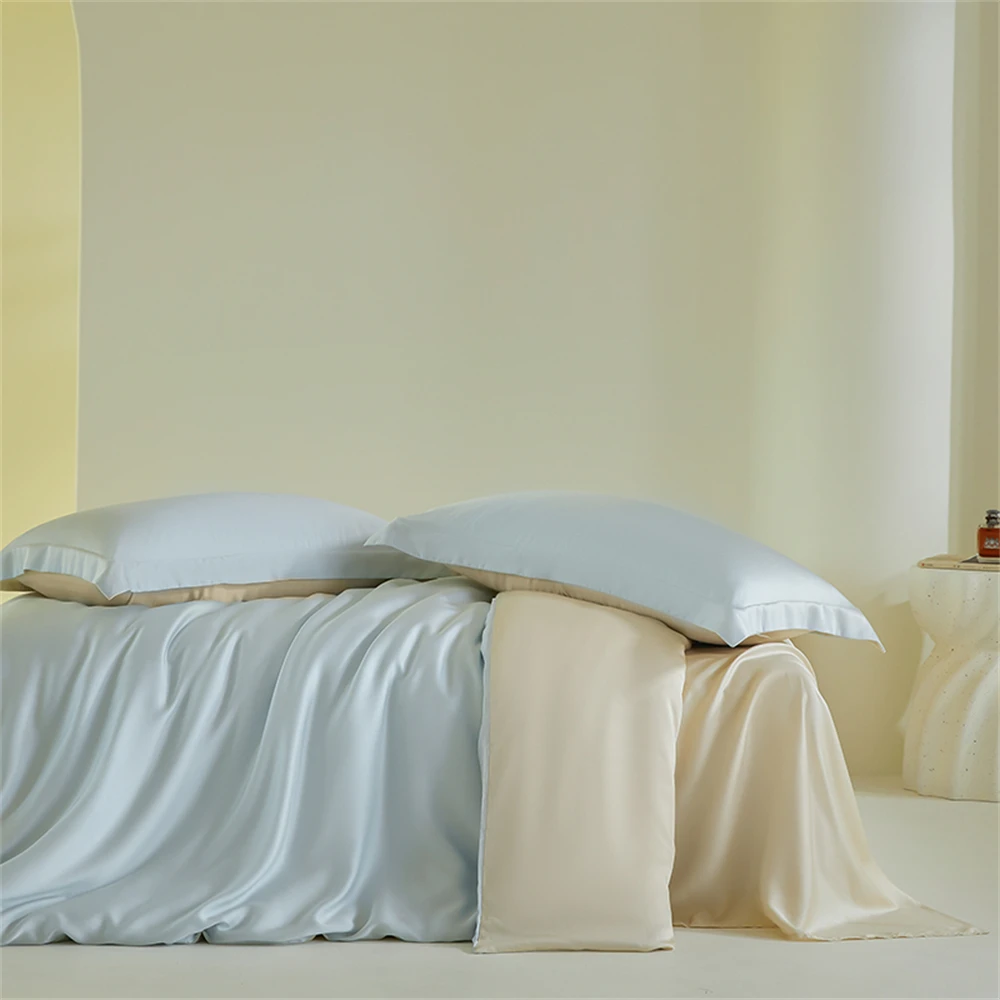
Silk and Velvet: Maximum Opulence
This pairing creates the ultimate luxury statement.
Benefits:
– Creates rich visual and tactile depth
– Perfect for winter bedding arrangements
– Exceptional light-catching properties between both fabrics
– Creates a high-impact design statement
Considerations:
– Best reserved for cooler seasons due to warmth
– Requires careful color coordination to avoid overwhelming the space
High-quality silk pillowcases paired with other premium fabrics allow you to experience silk’s benefits for your skin and hair even when using different materials for other bedding components. This approach creates a multi-dimensional sleep experience that engages all the senses while remaining practical for everyday use.
Style-Specific Silk Bedding Combinations
Your personal aesthetic preferences should guide your silk bedding combinations. Here are complete approaches to create cohesive looks across several popular design styles, each highlighting silk’s versatility.
Modern Minimalist Approach
This style emphasizes clean lines, restrained color palettes, and quality over quantity.
Key Elements:
– Monochromatic color scheme in whites, greys, or earth tones
– Minimal layering with precise, clean-lined arrangement
– Subtle textural variation rather than patterns
– Single accent color used sparingly for impact
Complete Component List:
– White or dove grey 22-momme fitted sheet
– Matching flat sheet with minimalist hem detail
– Tone-on-tone white or grey duvet cover
– Two standard pillows with matching cases
– One accent pillow in a complementary neutral or single pop color
– Optional ultra-thin throw at bed’s end with clean fold
Classic Luxury Styling
This timeless approach embraces traditional elegance with rich colors and thoughtful layering.
Key Elements:
– Richer color palette featuring ivory, gold, deep blue, or burgundy
– Symmetrical arrangement with formal presentation
– Multiple decorative pillows arranged in traditional formation
– Jacquard or damask patterns that add subtle sophistication
Complete Component List:
– Deep-colored fitted sheet (navy, burgundy, rich neutral)
– Complementary or matching flat sheet with elegant border detail
– Statement duvet cover in damask or tone-on-tone pattern
– Standard pillows with matching cases
– Two Euro shams in coordinating pattern
– Multiple decorative pillows arranged pyramidally
– Folded duvet at foot or luxurious throw with visible drape
Luxury silk bedding sets provide a perfect foundation for creating this timeless, sophisticated look with perfectly coordinated components.
Boutique Hotel Aesthetic
This style recreates the curated luxury of high-end hotels with pristine presentation.
Key Elements:
– Crisp white dominates with minimal accent colors
– Perfect symmetry and immaculate presentation
– Triple sheeting technique with folded top sheet
– Multiple pillow layers arranged with precision
– Structured rather than casual arrangement
Complete Component List:
– White fitted sheet with highest possible momme weight
– White flat sheet with simple hem, precisely folded over duvet
– White or soft neutral duvet cover, sometimes with subtle border detail
– Two sets of pillows: sleeping pillows in crisp cases plus decorative shams
– Accent throw or runner placed with geometric precision
– Optional decorative pillows in accent color (often a single hue)
Each style showcases silk’s versatility while creating a cohesive aesthetic that transforms your bedroom into a deliberate, designed space rather than simply a collection of bedding items.
Seasonal Adaptation Guide for Silk Bedding
One of silk’s most remarkable qualities is its natural temperature regulation, making it suitable year-round. However, thoughtful seasonal adaptations can maximize comfort while showcasing different aspects of your silk collection throughout the year.
Summer Combinations
During warmer months, emphasize silk’s cooling properties with these approaches:
Key Adaptations:
– Opt for lighter-weight silk (19-21 momme)
– Choose cooling colors like whites, soft blues, and pale greens
– Minimize layers, often eliminating the flat sheet
– Consider a lightweight silk duvet insert or simply use a silk coverlet
Practical Tips:
– Store heavier winter silk pieces in breathable cotton bags
– Position bed to maximize airflow around silk bedding
– Add a silk throw that can be easily removed during the night
– Consider cooling silk sheets specifically designed to enhance silk’s natural temperature-regulating properties
Winter Arrangements
Cold weather calls for cozy comfort while maintaining silk’s benefits:
Key Adaptations:
– Incorporate higher momme weights (22-25) for main components
– Layer multiple silk pieces for insulation without weight
– Choose warmer colors like deep blues, rich neutrals, or burgundies
– Add textural contrast with heavier accent fabrics
Practical Tips:
– Use a silk flat sheet between you and your duvet for additional warmth
– Layer silk blankets between sheets and duvet for added insulation
– Add a heavier decorative throw across the foot of the bed
– Consider using silk pillowcases even with flannel sheets for hair and skin benefits
Transitional Seasons
Spring and fall require flexibility as temperatures fluctuate:
Key Adaptations:
– Keep multiple layer options easily accessible
– Use medium-weight silk components that adapt to temperature changes
– Choose versatile colors that bridge seasonal palettes
– Create a base of year-round pieces with seasonal accents
The best silk bedding for summer may differ from your winter preferences, but maintaining core silk pieces year-round ensures you always enjoy the fabric’s beneficial properties while adapting to seasonal needs.
Professional Layering Techniques: Creating the Perfect Bed
Transform your silk bedding from simply placed components to a professionally styled arrangement using these step-by-step layering techniques practiced by luxury hotels and interior designers.
Foundation Preparation
Begin with the invisible elements that affect comfort and silk’s drape:
1. Use a mattress protector to prevent damage to expensive silk sheets
2. Consider a thin mattress topper for additional cushioning
3. Ensure the mattress surface is smooth and even before applying sheets
Fitted Sheet Application
The foundation layer requires proper technique:
1. Start with opposite corners for even tension
2. Smooth from the center outward to eliminate wrinkles
3. Ensure elastic edges are fully tucked under the mattress
4. For silk specifically, avoid pulling too tightly which can stress the fibers
Flat Sheet Positioning
Two main approaches work well with silk sheets:
1. Hotel-style: Place with the top edge aligned with the mattress top, then fold back over the duvet by 12-18 inches
2. European-style: Place with the pattern or hemstitched edge showing at the top, approximately 8 inches from the headboard
For the perfect hospital corner fold:
1. Tuck the bottom edge under the mattress
2. Lift the side hanging down at a 45-degree angle
3. Tuck in the bottom portion against the mattress
4. Bring the lifted portion down and tuck under
Duvet Arrangement
For the most appealing presentation:
1. Shake the duvet insert to distribute filling evenly
2. Place inside the duvet cover, securing at corners with ties or buttons
3. Position approximately 8-12 inches from the headboard (lower than the pillows)
4. Create the “inviting fold” by turning the top portion down approximately 15 inches
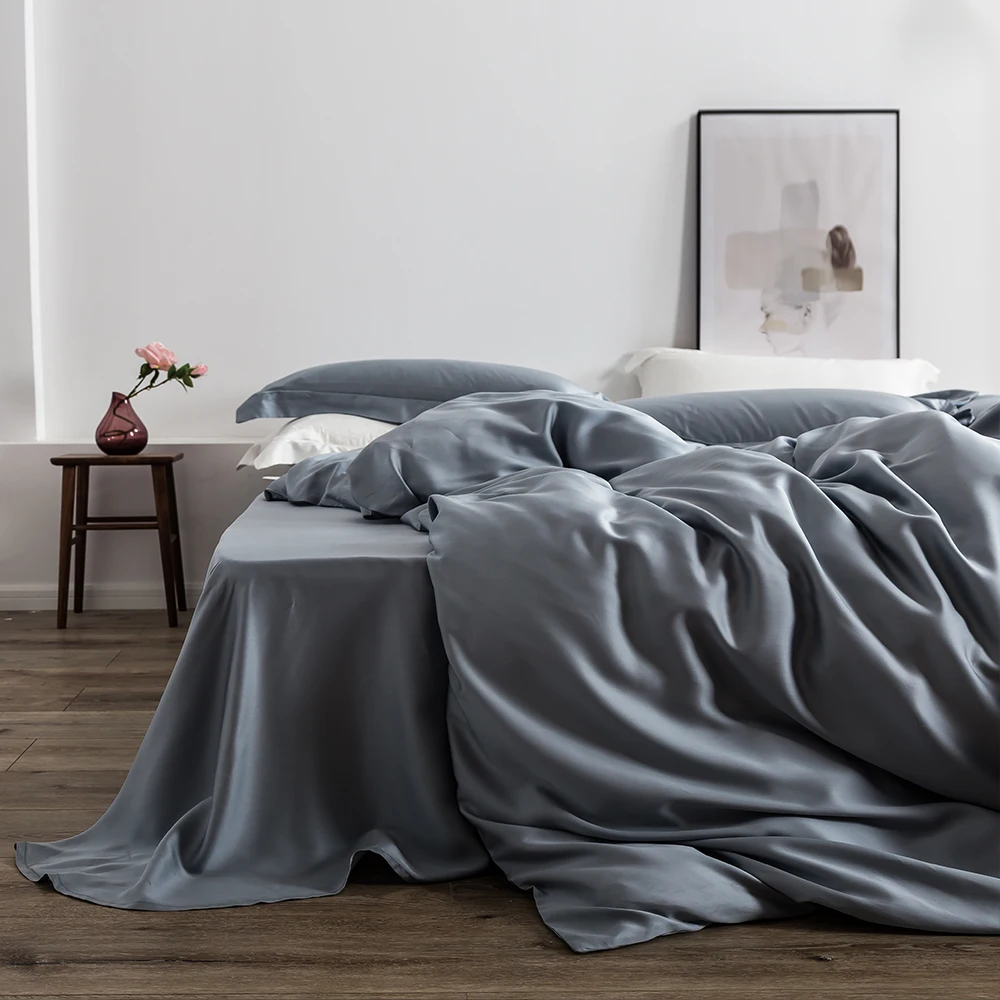
Strategic Pillow Layering
The art of layering silk bedding includes proper pillow arrangement:
1. Place sleeping pillows in silk pillowcases against the headboard
2. Add Euro shams (26”×26”) in front for height and structure
3. Place standard decorative shams next
4. Add smaller accent pillows at the front, typically in odd numbers (1, 3, or 5)
Final Accent Pieces
Complete the look with these finishing touches:
1. Place a folded throw or blanket at the foot of the bed, either:
– Horizontally across the entire width
– Diagonally from one corner
– Casually draped for an effortless look
2. Add a bed runner for color contrast and protection
3. Ensure all elements are balanced visually from the foot of the bed
These professional techniques elevate your silk bedding from merely comfortable to visually stunning, creating the perfect sleep sanctuary that looks as good as it feels.
Creating a Complete Silk Bedroom Experience
Extending the luxury of silk beyond your bed creates a cohesive sleep sanctuary that engages all your senses. Consider these elements to amplify your silk bedding’s impact throughout the entire bedroom environment.
Beyond the Bed: Silk Accents
Incorporate silk elements throughout the room to create visual continuity:
– Silk or silk-blend window treatments that complement bedding colors
– Decorative silk cushions on seating areas or window benches
– Silk throw blankets draped over reading chairs
– Silk lampshades that diffuse light with a similar glow to your bedding
Lighting for Silk’s Natural Luster
The right lighting dramatically enhances silk’s natural sheen:
– Install warm-toned lighting (2700-3000K) to bring out the richness in silk’s texture
– Position bedside lamps to cast gentle light across the bed’s surface
– Consider dimmers to adjust lighting levels that showcase silk differently throughout the day
– Add uplighting in corners to create soft ambient glow that highlights silk’s reflective quality
Complementary Bedroom Elements
Create harmony between your silk bedding and surrounding décor:
– Choose furniture finishes that either contrast with or complement your silk color palette
– Select artwork that incorporates colors from your bedding combinations
– Consider wall colors that provide either subtle background or dramatic contrast for your silk bedding
– Add natural elements like wood or stone to balance silk’s refined texture
California King Silk Fitted Sheet, King Size Silk Fitted Sheet, Mulberry Silk Fitted Sheet, Queen Size Silk Fitted Sheet
Price range: $120.04 through $390.79 Select options This product has multiple variants. The options may be chosen on the product page100% Silk Sheets, Green Silk Sheets, King Size Silk Bedding Set, Mulberry Silk Bedding Sets, Queen Size Silk Bedding Set
Price range: $1,246.21 through $1,615.22 Select options This product has multiple variants. The options may be chosen on the product pageFull Silk Bedding Set, King Size Silk Bedding Set
Price range: $120.99 through $190.49 Select options This product has multiple variants. The options may be chosen on the product pageGrey Silk Sheets, Silk Sheet and Pillowcase Set
Price range: $88.20 through $146.64 Select options This product has multiple variants. The options may be chosen on the product pageBamboo Silk Sheets, Cooling Silk Sheets
Price range: $130.76 through $177.80 Select options This product has multiple variants. The options may be chosen on the product page100% Silk Sheets, King Size Silk Bedding Set, Mulberry Silk Bedding Sets, Queen Size Silk Bedding Set, White Silk Sheets
Price range: $1,000.79 through $1,351.42 Select options This product has multiple variants. The options may be chosen on the product page
Creating layered silk bedding arrangements that extend beyond the bed itself transforms your entire bedroom into a comprehensive sleep sanctuary. This multisensory approach ensures that the luxury you feel when touching your silk bedding is reinforced by everything you see and experience in the space.
Special Care Considerations for Mixed Silk Bedding
Preserving the beauty and longevity of your silk bedding combinations requires understanding the specific care needs of both pure silk components and mixed fabric arrangements. Following these guidelines will protect your investment and maintain silk’s luxurious properties over time.
General Silk Care Principles
All silk bedding components benefit from these fundamental practices:
– Hand wash or use delicate machine cycle with temperatures below 30°C (86°F)
– Use pH-neutral detergents specifically formulated for silk
– Avoid direct sunlight when drying, which can fade colors and degrade fibers
– Iron on low heat (silk setting) with a press cloth between the iron and fabric
– Store in breathable cotton bags, never plastic, which can trap moisture
Managing Combined Fabric Care
When your bedding combination includes multiple fabric types:
– Sort components by fabric type for separate washing
– Consider the most delicate fabric’s needs when washing combination pieces
– Label storage containers for seasonal items with fabric content and care instructions
– Keep detailed notes of effective cleaning methods for specific combinations
Preventing Damage in Mixed Combinations
Protect your silk components with these preventative measures:
– Use fabric buffers (like cotton liners) between potentially damaging fabrics and silk
– Rotate combined bedding more frequently to prevent uneven wear
– Apply fabric protectors to non-silk components that contact silk directly
– Consider professional cleaning for complex layered pieces like quilts with silk elements
Quick Fixes for Common Issues
Address these common silk bedding challenges:
– Static: Lightly mist with distilled water to restore moisture
– Wrinkles: Steam rather than direct iron when possible
– Slipping: Use sheet grippers or ribbon ties sewn into corners
– Pulled threads: Never cut; gently pull back through from opposite side
For proper care of Mulberry silk fitted sheets and other foundation pieces, follow manufacturer guidelines closely, as these items experience the most direct contact and mechanical stress.
By addressing the specific care needs of each component in your silk bedding combination, you’ll enjoy their beauty and benefits for years longer than improperly maintained items.
Is Silk Bedding Right for Every Sleeper?
While silk bedding offers numerous benefits, it’s important to consider your personal preferences, sleeping habits, and practical concerns before investing in a complete silk bedding collection.
Benefits for Different Sleeping Styles
Hot Sleepers: Silk’s natural temperature regulation excels at wicking moisture and maintaining comfortable sleeping temperatures.
Skin-Sensitive Sleepers: The smooth protein fibers of silk minimize friction against skin, reducing irritation and “sleep creases.”
Allergy-Prone Sleepers: Silk’s natural resistance to dust mites, mold, and mildew makes it excellent for those with respiratory sensitivities.
Restless Sleepers: Silk’s smooth surface allows for easier movement throughout the night without tangling.
Practical Considerations
For those concerned about silk’s care requirements or investment level, consider:
– Starting with just silk pillowcases to experience benefits for hair and skin
– Using silk as the top layer (duvet cover and pillowcases) with more practical materials beneath
– Investing in one seasonal silk set while using alternative materials the rest of the year
– Choosing silk blends that offer easier care while retaining some benefits
Budget-Conscious Approaches
Silk bedding represents a significant investment, but these approaches make it more accessible:
– Purchase individual pieces over time to build a complete collection
– Focus on the components that contact your skin directly (pillowcases, flat sheets)
– Consider 19-momme weight for more affordable options that still offer benefits
– Look for peace silk or silk alternatives if ethical considerations are important
Determining if silk bedding is worth the investment depends on your individual priorities and sleeping needs. Many find that a strategic combination of silk components with other high-quality fabrics offers the best balance of luxury, practicality, and value.
How to Address Common Challenges with Silk Bedding Combinations
Even the most luxurious silk bedding can present practical challenges. Here are effective solutions to common issues, ensuring your silk bedding combinations remain both beautiful and functional.
Preventing Slippage
Silk’s smooth surface can cause sheets to slide on mattresses and pillowcases to slip off pillows:
– Use sheet straps or suspenders that clip to each corner under the mattress
– Select fitted sheets with deeper pockets and stronger elastic
– Choose pillowcases with envelope closures or hidden zippers
– Place a thin cotton liner between your mattress and silk fitted sheet for added grip
Maintaining a Smooth Appearance
When combining different fabrics, maintaining a polished look requires these techniques:
– Layer lighter fabrics over heavier ones to prevent weighing down silk’s natural drape
– Steam rather than iron combined fabric decorative pieces
– Rotate and flip silk components regularly to prevent uneven wear patterns
– Smooth bedding by hand each morning to maintain pristine appearance
Balancing Aesthetics with Comfort
Sometimes the most beautiful combinations aren’t the most practical:
– Use decorative silk pieces as the outermost layer, removed before sleeping
– Keep comfort-focused components in complementary colors for a cohesive look when decorative elements are removed
– Create “day look” and “night configuration” versions of your bed
– Use pillow inserts of appropriate firmness to maintain the shape of decorative silk shams
The advantages of sleeping on Mulberry silk are best enjoyed when these practical challenges are addressed, allowing you to appreciate both the beauty and comfort of your bedding combinations without frustration.
Where to Find Quality Silk Bedding Components
Building your perfect silk bedding combination starts with sourcing quality components. Knowing what to look for ensures your investment delivers both beauty and longevity.
Evaluating Silk Quality
When shopping for silk bedding, verify these quality indicators:
– OEKO-TEX Standard 100 certification ensuring the silk is free from harmful substances
– Clear momme weight specification (ideally between 19-25mm for bedding)
– Mulberry silk specification rather than less durable alternatives
– Detailed information about the weave (charmeuse is most common for bedding)
Key Questions for Retailers
Quality-focused vendors will readily answer these questions:
– Is this 100% Mulberry silk or a blend?
– What is the exact momme weight?
– Are dyes non-toxic and colorfast?
– What type of closure systems are used (buttons, zippers, envelope)?
– What specific care instructions do you recommend?
Indicators of Quality Construction
Beyond the silk itself, examine these construction details:
– French seams or other enclosed stitching that prevents fraying
– Consistent, tight stitching with appropriate thread count
– Perfect pattern matching at seams
– Reinforced corners on fitted sheets
– Even color distribution with no fading or streaking
For comprehensive guidance, the ultimate guide to buying luxury silk bedding provides detailed information on evaluating quality, understanding terminology, and making informed purchasing decisions.
Whether you choose to build your collection piece by piece or invest in complete sets, prioritizing quality over quantity ensures each component contributes to a truly luxurious sleep sanctuary that will last for years.
Conclusion: Embracing the Art of Silk Bedding Combinations
Creating your perfect silk bedding combination is both an art and a science—a balance between aesthetic vision and practical comfort. Throughout this guide, we’ve explored how thoughtfully selected and arranged silk components can transform an ordinary bedroom into an extraordinary sleep sanctuary.
The principles we’ve covered—from understanding silk quality and color theory to mastering professional layering techniques—provide a framework for creating bedding arrangements that please both the eye and body. Remember that successful combinations honor both visual harmony and physical comfort, creating an environment that nurtures restful sleep.
As you develop your own silk bedding style, don’t hesitate to experiment. The most compelling bedrooms often evolve over time, incorporating new pieces and arrangements that reflect your evolving preferences. The versatility of silk allows for endless adaptations across seasons and design trends while maintaining its timeless appeal.
Perhaps most importantly, the investment in quality silk bedding pays dividends beyond mere aesthetics. The proven benefits for skin health, temperature regulation, and sleep quality make silk bedding combinations a choice that enhances wellbeing night after night.
Whether you begin with a single silk pillowcase or commit to a complete ensemble, embracing silk bedding is an investment in your daily comfort and long-term wellness—truly transforming ordinary sleep into an extraordinary experience.

